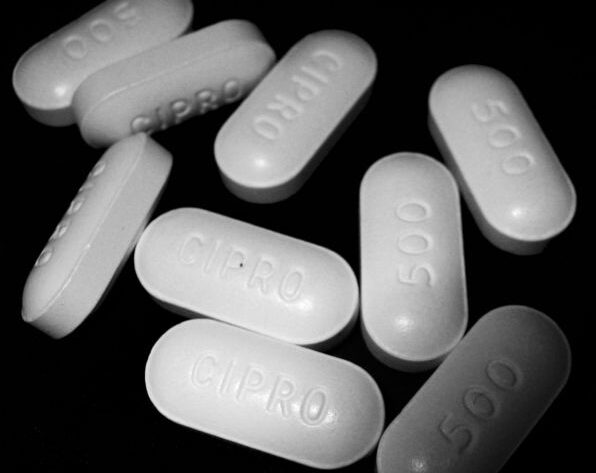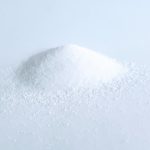Cipro, and fluoroquinolones in general, are brutal. They are a super strong antibiotic that can even take out anthrax. But this particular antibiotic has been also commonly been used to treat urinary tract infections (UTIs). This is unfortunate, because so many UTIs have been healed with safer antibiotics, or even naturally.
Sadly, Cipro (along with other fluoroquinolone antibiotics) has caused so much harm to many people. There is now a black box warning for Cipro due to known tendon damage in those who have taken it. However, side effects don’t end there, but this article is geared to addressing how Cipro and tendonitis are related.
I personally have been affected by Cipro and have been searching a long time for answers and for healing. Here is some information that I hope you may find useful:
What causes Cipro-induced tendonitis and tendon problems?
Here is some information from a medical article called Physical Therapist Management of Fluoroquinolone-Induced Achilles Tendinopathy:
“One hypothesis of the etiology is that the histological changes result in decreased tensile loading capacity of the tendon such that normal functional activities overload the tendon. The literature does not explain why drug-induced tendinopathy and rupture occur more frequently in the Achilles tendon, but the rapid and immense tendon loading during weight-bearing activities, such as walking and running, may make the Achilles tendon more vulnerable than other tendons. Risk factors believed to be associated with Achilles tendinopathy and rupture are use of corticosteroids, increasing age (over age 60 years), chronic renal disease, and rheumatoid arthritis.” [1]
So this basically means that Cipro, and other fluoroquinolones, lower your tendon’s normal ability to bear weight. Doing normal activities like walking has been known to cause tendon rupture for some. Each person appears to have varying degrees of ability and tendon normality.
In the article it shares a story about someone’s experience and the doctor’s analysis of symptoms:
After taking a fluoroquinolone antibiotic, much like Ciprofloxacin, a man went to the emergency department due to severe pain with standing and an inability to walk.
“Two days later, he was seen by a physiatrist, who diagnosed his condition as bilateral Achilles tendinopathy. At that time, he was referred for physical therapy…Based on the pathophysiology of drug-induced tendinopathies, I believed that the fluoroquinolone antibiotic had altered the microscopic structure of the tendon and the ability of the collagen to resist tensile forces during normal weight-bearing activities. Based on the signs and symptoms, the patient did not appear to have a primary inflammatory problem; however, an inflammatory response was induced after mechanical overloading. I determined that the patient had impaired motor function and muscle performance associated with connective tissue dysfunction of the Achilles tendons. The physical therapist diagnostic classification was Pattern 4D, “Impaired Joint Mobility, Motor Function, Muscle Performance, and Range of Motion Associated with Connective Tissue Dysfunction.”[1]
In this case, the tendon structure had changed and it’s usual strength had been reduced. No body inflammation was noticed until the tendons were used via normal activities, which overloaded them. The tendons and muscles had impaired function.
“Based on the analysis of literature, the main directions of possible effective treatment of FQAD are proposed: (a) reduction of the oxidative stress, (b) restoring reduced mitochondria potential, (c) supplementation of uni- and bivalent cations that are chelated by FQs and probably ineffectively transported to the cell (caution must be paid to Fe and Cu because they may generate Fenton reaction), (d) stimulating the mitochondrial proliferation, (e) removing FQs permanently accumulated in the cells (if this phenomenon takes place), and (f) regulating the disturbed gene expression and enzyme activity.”[2]
Based on this particular medical review article, Treatment of the Fluoroquinolone-Associated Disability: The Pathobiochemical Implications, the suggested treatments might include:
-
Reduction of oxidative stress – consider researching ways to avoid free-radicals, healing oxidative stress, healing mitochondria or mitochondria diet.
-
Restoring mitochondria – research Mito diet, or ways to heal mitochondria.
-
Removing FQs (fluoroquinolones) that accumulated in the cells – there are some unknowns in this area, but many believe that the FQ’s are stored within the body, long after they are taken. Consider researching ways to detox fluoride, which is bonded to the FQs. However, I personally do not recommend large doses of iodine, which can displace fluoride in the body. Iodine can be helpful, but only in proper dosing, as it can also affect the thyroid. Consult your doctor as well. I find that iodine deficiency is something many of the floxed have in common. I personally speculate that it might be related to the reason why some people are floxed and others are not. Furthermore, on the topic of detoxing from FQs, look into ways to remove toxins from the body in a gentle manner. Consider intermittent fasting, anti-inflammatory diets, The Wahls Protocol, and ways to heal the gut. Drink clean purified water (not from the tap). Fix any iodine deficiencies, and also consider going organic to avoid pesticide residue.
“Many papers point to the feature of FQs to generate oxidative stress in the cells. Kumbhar et al. reported gatifloxacin (GAT) to produce retinal damage in rabbits and significant alteration in the antioxidant status indicated by the decreased activity of superoxide dismutase and decreased levels of blood glutathione with a concomitant increase in the activity of catalase, glutathione peroxidase, and glutathione S-transferase enzymes… The substantial depletion in SOD3 and glutathione was observed especially in [Cipro] patients. All three FQs reduced the plasma antioxidant status, but especially [CIPRO] and [LEVAQUIN].” [2]
Therefore, restoring glutathione and consuming foods high in both glutathione and antioxidants is beneficial to restoring health after FQs.
There is far more to fluoroquinolones that we have yet to understand. Hopefully this information proves useful to you for healing.
1. Brenda L Greene, Physical Therapist Management of Fluoroquinolone-Induced Achilles Tendinopathy, Physical Therapy, Volume 82, Issue 12, 1 December 2002, Pages 1224–1231, https://doi.org/10.1093/ptj/82.12.1224
2. Michalak K, Sobolewska-Włodarczyk A, Włodarczyk M, Sobolewska J, Woźniak P, Sobolewski B. Treatment of the Fluoroquinolone-Associated Disability: The Pathobiochemical Implications. Oxid Med Cell Longev. 2017;2017:8023935. doi: 10.1155/2017/8023935. Epub 2017 Sep 25. PMID: 29147464; PMCID: PMC5632915. https://www.proquest.com/openview/9286b102c65298e7c985fba826b48a8b/1?pq-origsite=gscholar&cbl=2037493



